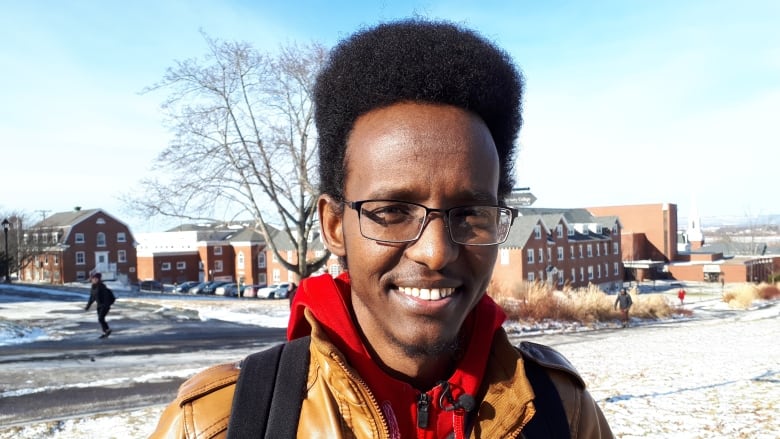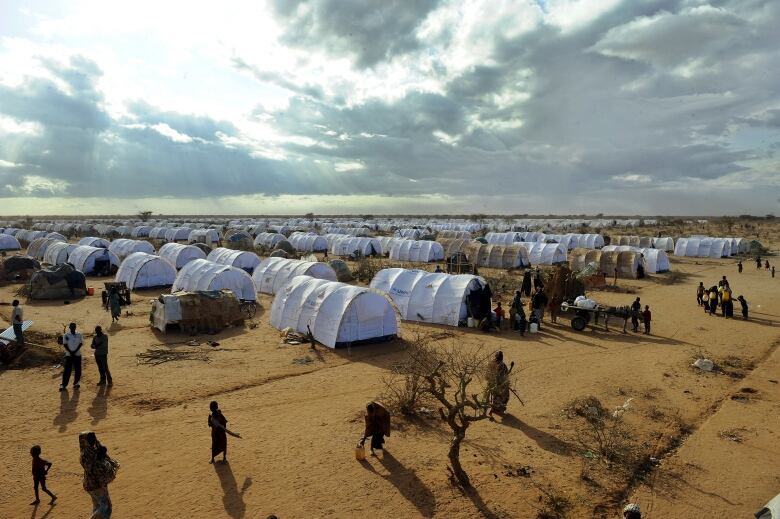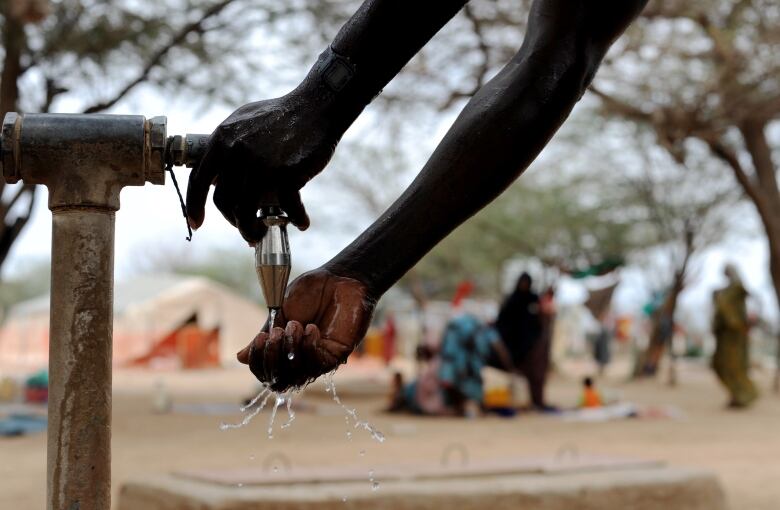Meet the student who went straight from a Kenyan refugee camp to Acadia
Noor Ahmed is originally from Somalia and is studying computer science at the Wolfville, N.S., university

When Acadia University student Noor Ahmed first stepped foot on campus, his reaction was different from that of most other students.
"My first impression was this is a big school, but then I stayed for some time and people said this is like a small campus, so I was so surprised," said the second-year computer science student.
Located in Wolfville, N.S., Acadiais a small university compared to most other Canadian ones, but for Ahmed, whoattended high school at a refugee camp in Kenya with about 200 other students, it seemed gigantic.
Ahmedis originally from Mogadishu, Somalia,but in 2006his family fled to the Kenyan refugee camp of Dadaab because of civil war, fighting and bombings.
According to the United Nations High Commissioner for Refugees, at the end of January 2018, Dadaab was home to almost 240,000 refugees.

Ahmed went to the refugee camp with his mother, three brothers and three sisters. It was here that he first started going to school. In Somalia, the only formal education he'd received was attending an Islamic school where he learned the Qur'an.
Through the help of a non-profit organization called World University Service of Canada, Ahmedreceiveda scholarship to attend Acadia.
What makes Ahmed's story even more remarkable is that he didn't even use a computer until he was 19 when he was in Grade 12. Ahmed said he was drawn to computer science because he likes computers, what they can do and the fact some of the world's wealthiest people work in the technology business.
Ahmed's late introduction to computers meant he was slow at typing when he first got to Acadia.

"This was kind of one of these things we take for granted, but he was in a refugee camp and had access to a computer for like two hours a week," said Darcy Benoit, one of Ahmed's professors.
Having Ahmedin the classroom has influenced Benoit's teaching.
"I don't reference things that are only accessible to students who are from, say, Canada or North America," said Benoit. "I try to make sure that the class is international as such so that when I talk about particular things ... it's something that he'd be able to relate to as well."
Benoit said Ahmed fits in like any other student these dayshe attends classes, visits during office hours and submits his assignments.

Ahmed didn't arrive at Acadia right after his high school graduation. He worked at a local school and then for a non-governmental organization in the refugee camp for two years before he spent the next two years getting a scholarship and the necessary papers lined up.
Adjusting to life in Canada initially took some time for Ahmed. Besides getting used to the cold weather, one of the primary challenges was the food. For the first little while, Ahmed said he just ate rice, vegetables and snacks, but then he learned the cafeteria offered Halal dishes.
A soccer fan, Ahmed has attended many games on campus.He's even been to some hockey games, which he foundconfusing at first.
"I didn't understand why the players were being switched, like a group comes in and then suddenly there's another group that goes out," he said.
Ahmed has taken a shine to skiing and was planning a trip to Ski Martock in Windsor when CBC News spoke with him.

The makeup of the Acadia student body is another thing that surprised Ahmed.
"When I was back in Kenya, I always had this impression that most of the students were going to be Canadians or white-descent students," he said.
"And I was a little bit worried, but when I came I realized ... there are a lot of international students in Acadia. And when I met them in the orientation week, I realized I'm not the only one, so I blended in."
The Annapolis Valley university has about 3,900 students, of which about 13 per cent are international students.
After graduation, Ahmed said he hopes to stay in Nova Scotia.
He said he misses his family, who are still at the refugee camp in Kenya.
"As much as they want me to come back, they also want me to get through my education," he said.












_(720p).jpg)


 OFFICIAL HD MUSIC VIDEO.jpg)
.jpg)



























































































